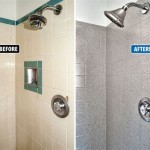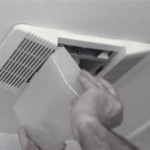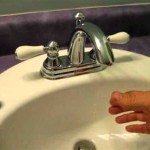Installing a Bathroom Exhaust Fan Duct Through a Soffit
Proper ventilation is crucial for maintaining a healthy bathroom environment. Exhaust fans remove excess moisture and unpleasant odors, preventing mold growth and structural damage. Venting through a soffit is a common and effective method, especially for bathrooms located on upper floors. This article provides a step-by-step guide for installing a bathroom exhaust fan duct through a soffit.
Planning and Preparation
Before beginning any work, careful planning and preparation are essential. This includes understanding local building codes, selecting the correct materials, and gathering necessary tools.
- Consult local building codes for specific requirements regarding ventilation and ductwork.
- Choose a duct size that matches the exhaust fan's outlet. Common sizes include 4" and 6".
- Select rigid metal or flexible aluminum ductwork for optimal airflow and fire safety. Avoid using vinyl or plastic ducting.
- Gather necessary tools, including a drill, reciprocating saw, screwdriver, measuring tape, safety glasses, and gloves.
- Determine the shortest and most direct route from the fan to the soffit vent.
- Inspect the soffit for any existing obstructions, like wiring or plumbing.
- If possible, choose a soffit location away from overhanging trees or shrubs to reduce debris buildup.
Cutting the Soffit Opening
Creating the opening in the soffit requires precision to ensure a proper fit for the vent cap.
- Measure the dimensions of the soffit vent cap's flange.
- Mark the outline of the opening on the soffit using a pencil or marker.
- Carefully cut the opening using a reciprocating saw, ensuring the cut is clean and straight.
- Remove any insulation or debris from the opening.
Installing the Ductwork
Proper duct installation is crucial for efficient ventilation. Secure connections and proper insulation prevent air leaks and condensation.
- Connect the ductwork to the exhaust fan's outlet using metal foil tape. Ensure a tight seal to prevent air leakage.
- Run the ductwork through the joist space and towards the soffit opening, supporting it with duct straps every 4-6 feet.
- If using flexible ductwork, avoid kinks or sharp bends that can restrict airflow.
- Insulate the ductwork with R-8 or higher insulation to prevent condensation and improve energy efficiency.
- Securely attach the ductwork to the soffit vent cap using metal foil tape.
Installing the Soffit Vent Cap
The soffit vent cap protects the ductwork and provides a finished appearance.
- Insert the soffit vent cap into the opening, ensuring the flange is flush with the soffit.
- Secure the vent cap to the soffit using screws or nails, as recommended by the manufacturer.
- Apply caulk around the perimeter of the vent cap to seal any gaps and prevent water intrusion.
Testing the Installation
After completing the installation, it's essential to test the system to ensure proper operation.
- Turn on the exhaust fan and check for proper airflow at the soffit vent.
- Place a hand near the vent to feel the exhaust air. Check for any obstructions or reduced airflow.
- Inspect the ductwork for any leaks or signs of condensation.
Maintenance and Considerations
Regular maintenance ensures the continued effectiveness of the exhaust fan and ventilation system.
- Clean the vent cap periodically to remove debris that can obstruct airflow.
- Inspect the ductwork for any damage or deterioration.
- Consider installing a backdraft damper to prevent cold air from entering the bathroom through the vent when the fan is not in operation.
- If experiencing persistent moisture problems, consider upgrading to a higher CFM (cubic feet per minute) exhaust fan.
Safety Precautions
Safety is paramount during any home improvement project. Taking appropriate precautions can prevent accidents and injuries.
- Always turn off power to the circuit before working with electrical wiring.
- Wear appropriate safety gear, including safety glasses and gloves.
- Use caution when working with sharp tools, such as reciprocating saws and drills.
- Be aware of potential hazards, such as plumbing and wiring within the walls and soffit.
By following these guidelines, homeowners can effectively install a bathroom exhaust fan duct through a soffit, improving ventilation and maintaining a healthy bathroom environment. Remember to prioritize safety and consult local building codes throughout the process.

Adding A Bathroom Fan Fine Homebuilding

How To Vent A Bathroom Fan Through Soffit 4 Step Guide Home Inspector Secrets

Bathroom Venting Through Soffit Greenbuildingadvisor

Everbilt 4 In To 6 Soffit Exhaust Vent Sevhd The Home Depot

Inspecting The Bathroom Exhaust Internachi

Soffit Exhaust Vent Installation Dundas Jafine

Choosing The Right Vent Cap For A Soffit Primexvents

How To Vent A Bathroom Fan Through Soffit 4 Step Guide Home Inspector Secrets

Installing A Bathroom Fan Fine Homebuilding

Bathroom Fan Innovation Wins Gold For Panasonic 2024 07 23 Achr News
Related Posts







